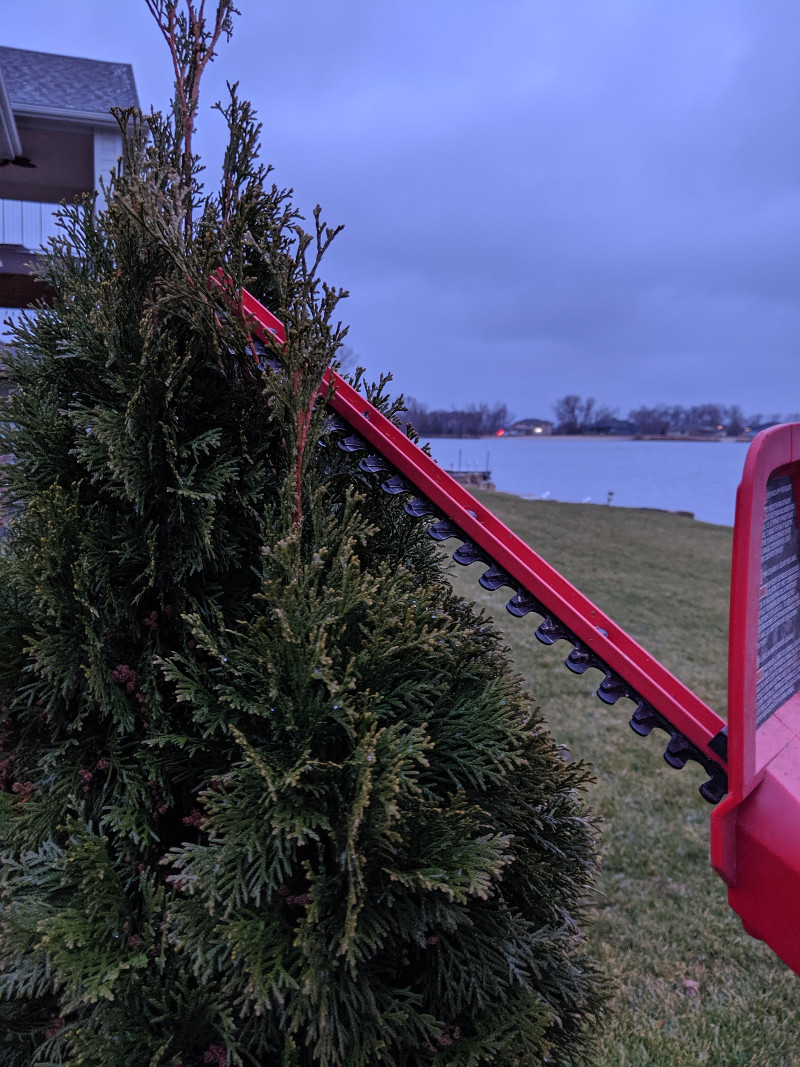How To Cut Back Arborvitae For Best Results
Arborvitae are great plants for a variety of purposes. There is a reason they are found in many of the most beautiful landscapes in any neighborhood. In order to maximize the beauty and purpose of these plants you do need to care for them well. This article will help you learn about Arborvitae and how to keep them looking their best.

Arborvitae or different from many other kinds of trees. They are conifers, which means they bear needles instead of broad leaves. This is important to understand because needles only grow from newer, green wood. If you cut back a broad leaf, or deciduous tree, shoots will grow from buds below the cut. However, pruning back an arborvitae requires more precision. Only the last portion of a branch has buds that can generate new shoots. Cutting into the old, brown wood will leave a gardener disappointed with bald spots that take many seasons to heal. This is true of conifers with fanlike needle growth.
As you prepare for the best time to prune your arborvitae, consider the following tips as on when to prune your shrub or tree.
When to Prune Arborvitae
The best time to prune your arborvitae depends on what you are trying to accomplish. Are you trying to reduce its overall size? Is your goal to maintain that perfect pyramid shape? Do you want to remove some overgrowth or are you looking to trim it all the way to the ground? Knowing your goal determines when is the best time to prune.
Pruning Arborvitae to Maintain an Ornamental Look
Spring - Removing overgrowth is similar to helping the tree maintain its shape. You will want to prune in mid-summer while the plant has time to grow to shoots before winter. Consider cutting the overgrown branches slightly behind the sight line, or desired edge of the plant’s foliage. However, don’t cut too deep or your plant can develop some bare spots.

Pruning Arborvitae to Shorten a Tall Hedge
Late spring after flowering - After the arborvitae has flowered and before mid-summer is the best time to prune back a tall hedge row. The plant can maintain itself after flowering and maintain the height you are looking for. If you are making drastic changes to its height, it is best to cut back a foot or so a year until you have the size you want. This helps keep your cuts in the green wood, which will allow the top of the arborvitae to fill in.

Greatly Shorten an Arborvitae
Late Winter - You should cut an arborvitae in the late winter if you are planning a major reduction in its height. The plant stores most of its nutrients in the roots over winter. You want to cut before the nutrients start to move upward to the leaves and branches, but after most of the hard winter has passed. Taking the top off an arborvitae is rare. They don’t grow new leaders, so the top becomes squarish and many find them unsightly. Make sure this is exactly what you want before you take the top off. If you wait until spring, you may be too late, as this can put added stress on your plant.

Pruning Arborvitae Down to the Ground to Form Shrubs
Early Spring - Arborvitae can be cut down to the ground to form shrubs. This should occur in early spring before the plant has flowered and new buds have appeared.
How to Prune Arborvitae
Now that you know when to prune your arborvitae, it is time to talk about how to prune it correctly. Arborvitaes can handle a fair amount of pruning, but typically they only need shaping to maintain appearance and remove growth abnormalities. There definitely is a right way to prune your arborvitae and following these steps will get you the results you want!
Step 1 - Don’t cut too much!
Arborvitaes are hardy plants. They can handle some pruning, but new growth won’t come from old wood. If you cut the branches back beyond the ends, you may be disappointed that no new growth fills in. Many arborvitae owners have finished a season frustrated by the blank spots on their plant, even though it could have been avoided if they had stuck to the last 10-20% of the branches. Trim the terminal tips and makes sure not to remove more than 25-35% of the tree’s foliage.
Step 2 - Cut the correct location on the branch
To prune your arborvitae, cut new the junction of new shoots. Keep your cuts in the green wood. You can check before cutting by making a small scratch in the bark with your fingernail and examining the color underneath. Don’t cut back beyond the green needles. This is the biggest mistake you can make.
To reduce your arborvitae’s height, cut above the spot where the branch meets the shoot. This will reduce shoot growth higher than the cut.
For branches that shoot out beyond the border of the foliage, cutting them back inside the border will help maintain the look you want.
Step 3 - Prune in sections, not around the plant
A common pruning mistake occurs as a person cuts around the tree, instead of working in sections. By working on one side of the tree at a time, you are less likely to make mistakes. Working around the tree can make it uneven.
Step 4 - Step away frequently and examine
As you trim the arborvitae, step away frequently and examine your work. You are trying to create a uniform border around the tree that ensures light gets to the bottom foliage. If you are pruning down a hedge, it can be wise to run a string in front or behind the trees to ensure it is straight, you will be better off.
Why Prune Arborvitae
There are many reasons people prune arborvitaes. The most common is to maintain its appearance. Other reasons might include the removal of unsightly or abnormal growth, to ensure lower sections are not being shaded by higher foliage, or to remove overgrown, dead branches. Arborvitaes can grow quite tall and should be pruned to maintain the desired look.

Often, people are interested in pruning an arborvitae after purchasing a new home. Previous owners may not have maintained the plant well and a makeover is required. New arborvitae owners can reshape the plants in a few seasons by understanding how they grow, when to cut the plans and how to prune correctly.
Arborvitae Pruning Tips
-
A little goes a long way! Remember not to remove more than 25-35% of the foliage or cut back beyond the last foot or so of a branch, if you want to see regrowth.
-
The best time to prune an arborvitae depends on why you are pruning. Check out the guide above.
-
Clean and sanitize your pruning shear before you start pruning.
-
Keep the bottom of the arborvitae wider than the top to allow sunlight to filter down to lower foliage.
-
No new growth comes from old wood! If you take the top off, it won’t regrow a new emerging, or leader, branch in the same way other trees do.
If you follow these tips, your arborvitae can continue to serve your landscape well! These plants are versatile and beautiful. You will be able to enjoy your arborvitae for years to come!
 |
Author Chris Link - Published 12-13-2019 |
